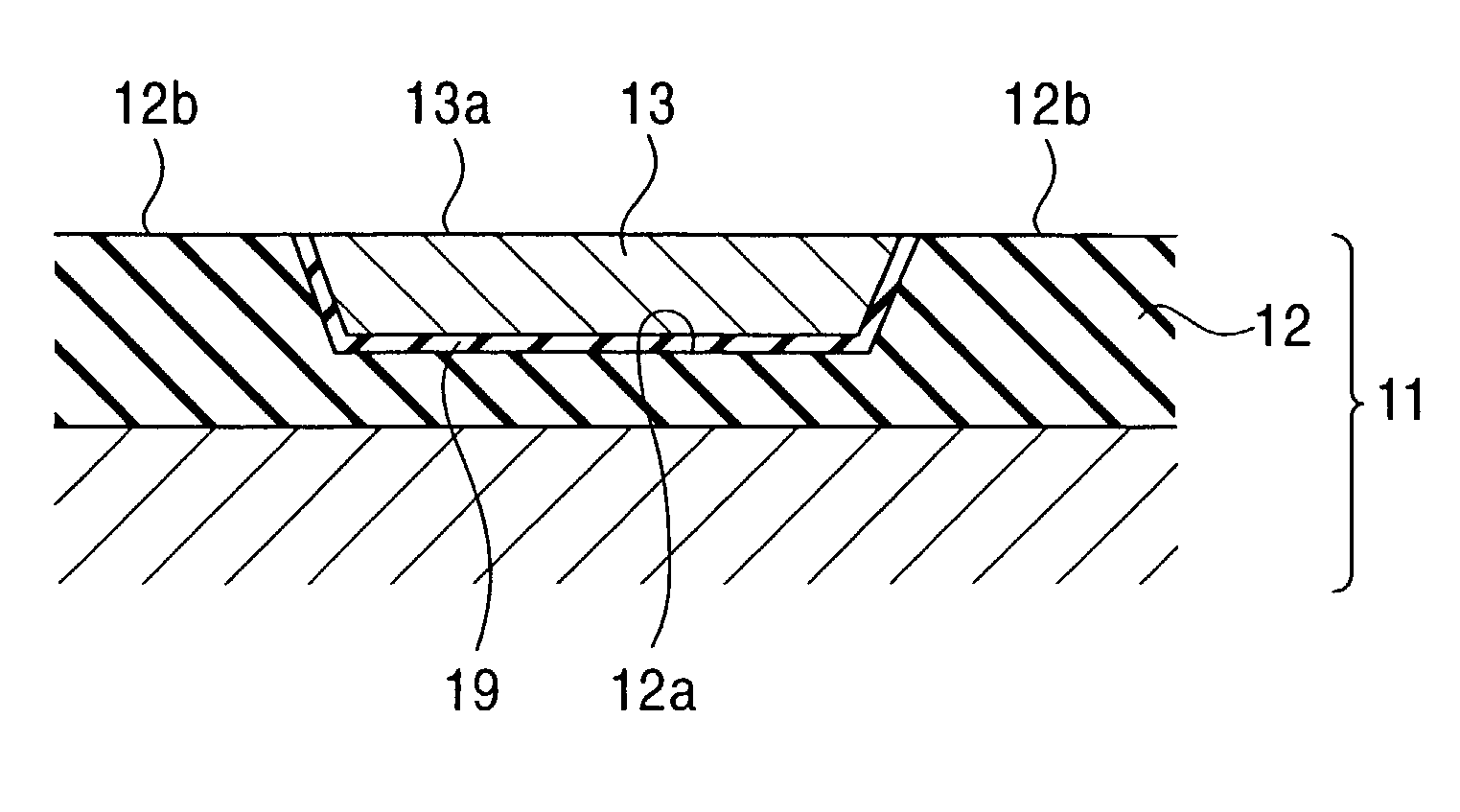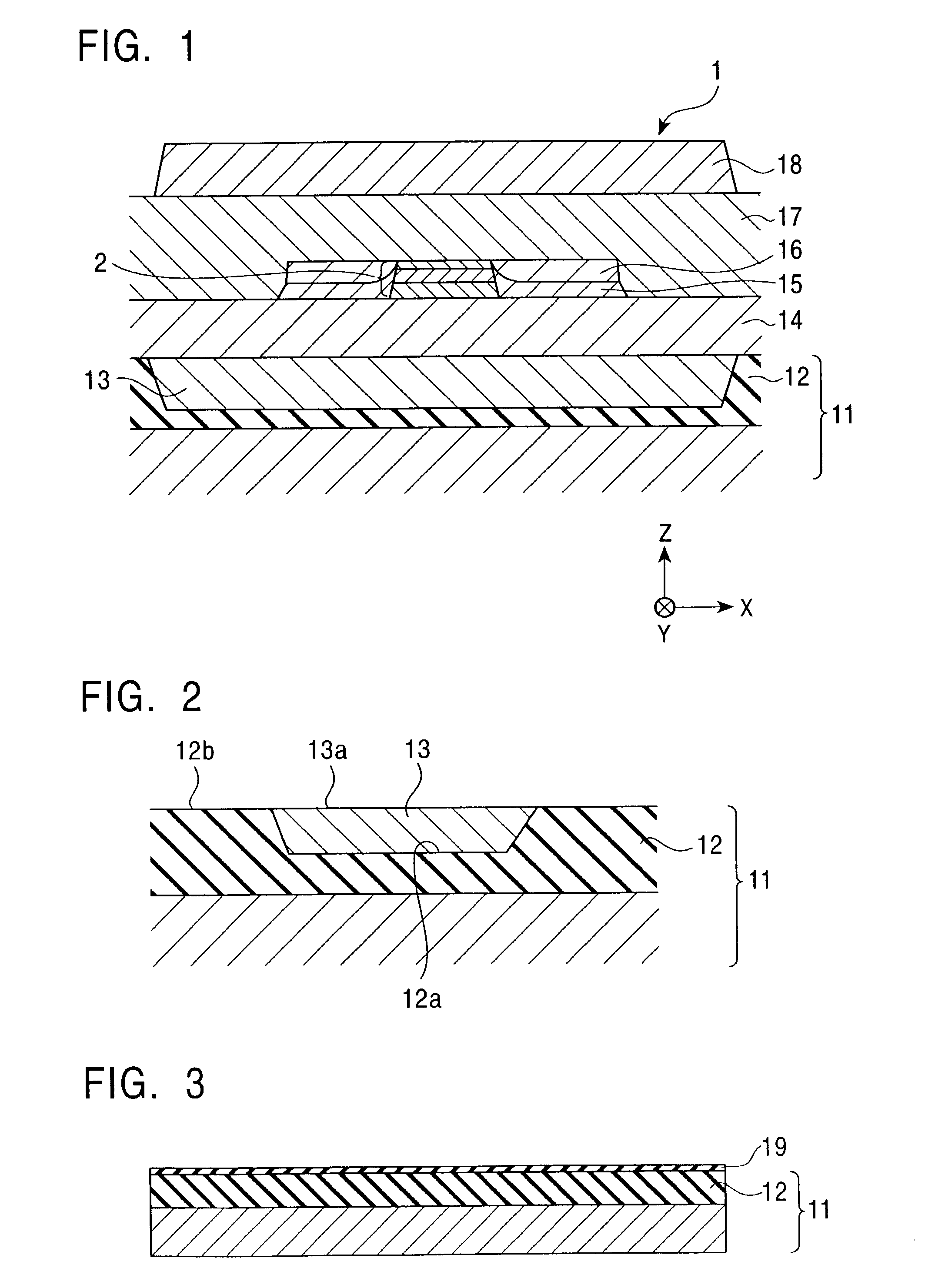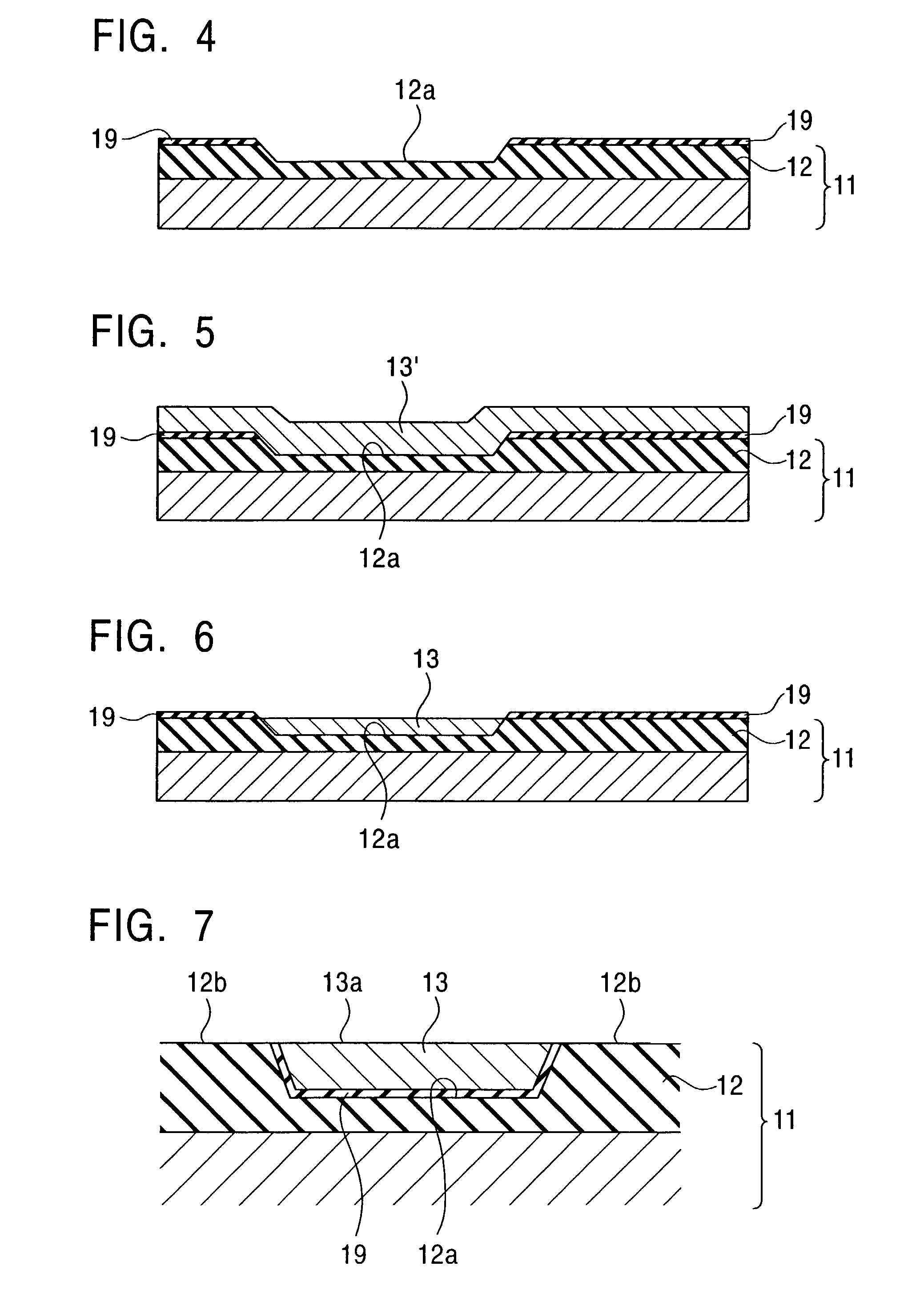Thin-film magnetic head and method of forming the same
a thin film, magnetic head technology, applied in nanoinformatics, instruments, manufacturing tools, etc., can solve the problems of alumina surface roughness, alumina thickness is typically corroded and rough, and it is difficult to control the thickness of the lower shielding layer. , to achieve the effect of easy control of the thickness of the film, high accuracy
- Summary
- Abstract
- Description
- Claims
- Application Information
AI Technical Summary
Benefits of technology
Problems solved by technology
Method used
Image
Examples
Embodiment Construction
[0026]FIG. 1 is a sectional view, as viewed from the side of a head surface (ABS surface) positioned to face a recording medium, showing an overall multilayered structure of a thin-film magnetic head 1 according to a first embodiment of the present invention. The thin-film magnetic head 1 is a thin-film magnetic head for reproduction, which is provided at a trailing-side end of a floating slider of a hard disk drive, for example. In FIG. 1, X-, Y- and Z-directions are defined respectively as a direction of a track width; a direction of a magnetic field leaked from the recording medium, and a moving direction of the recording medium.
[0027]The thin-film magnetic head 1 has a substrate (AlTiC substrate) 11 made of aluminum-titanium-carbide (AlTiC). On a surface of the AlTiC substrate 11, an underlayer 12 made of alumina is formed as a substrate protective layer in advance.
[0028]On the AlTiC substrate 11, a lower shielding layer 13, a lower gap layer 14, a magnetoresistive sensor 2, an ...
PUM
| Property | Measurement | Unit |
|---|---|---|
| thickness | aaaaa | aaaaa |
| thickness | aaaaa | aaaaa |
| depth | aaaaa | aaaaa |
Abstract
Description
Claims
Application Information
 Login to View More
Login to View More - R&D
- Intellectual Property
- Life Sciences
- Materials
- Tech Scout
- Unparalleled Data Quality
- Higher Quality Content
- 60% Fewer Hallucinations
Browse by: Latest US Patents, China's latest patents, Technical Efficacy Thesaurus, Application Domain, Technology Topic, Popular Technical Reports.
© 2025 PatSnap. All rights reserved.Legal|Privacy policy|Modern Slavery Act Transparency Statement|Sitemap|About US| Contact US: help@patsnap.com



